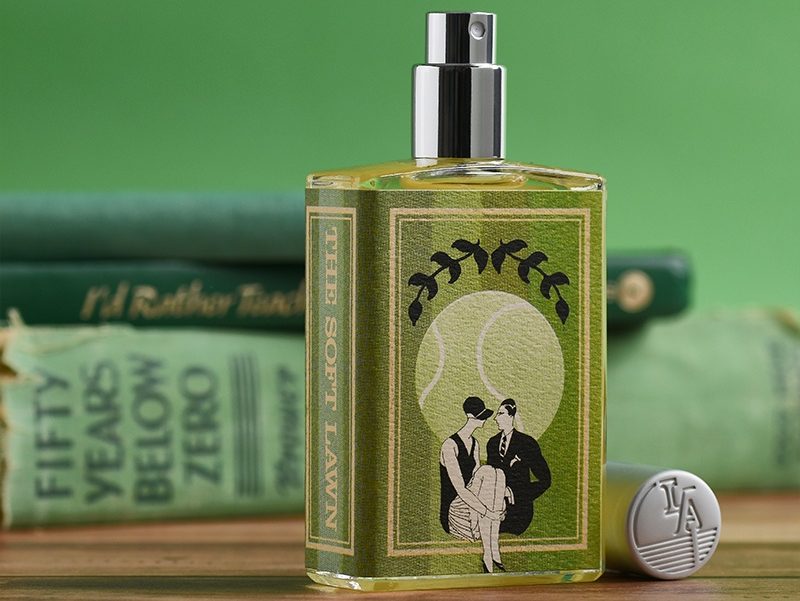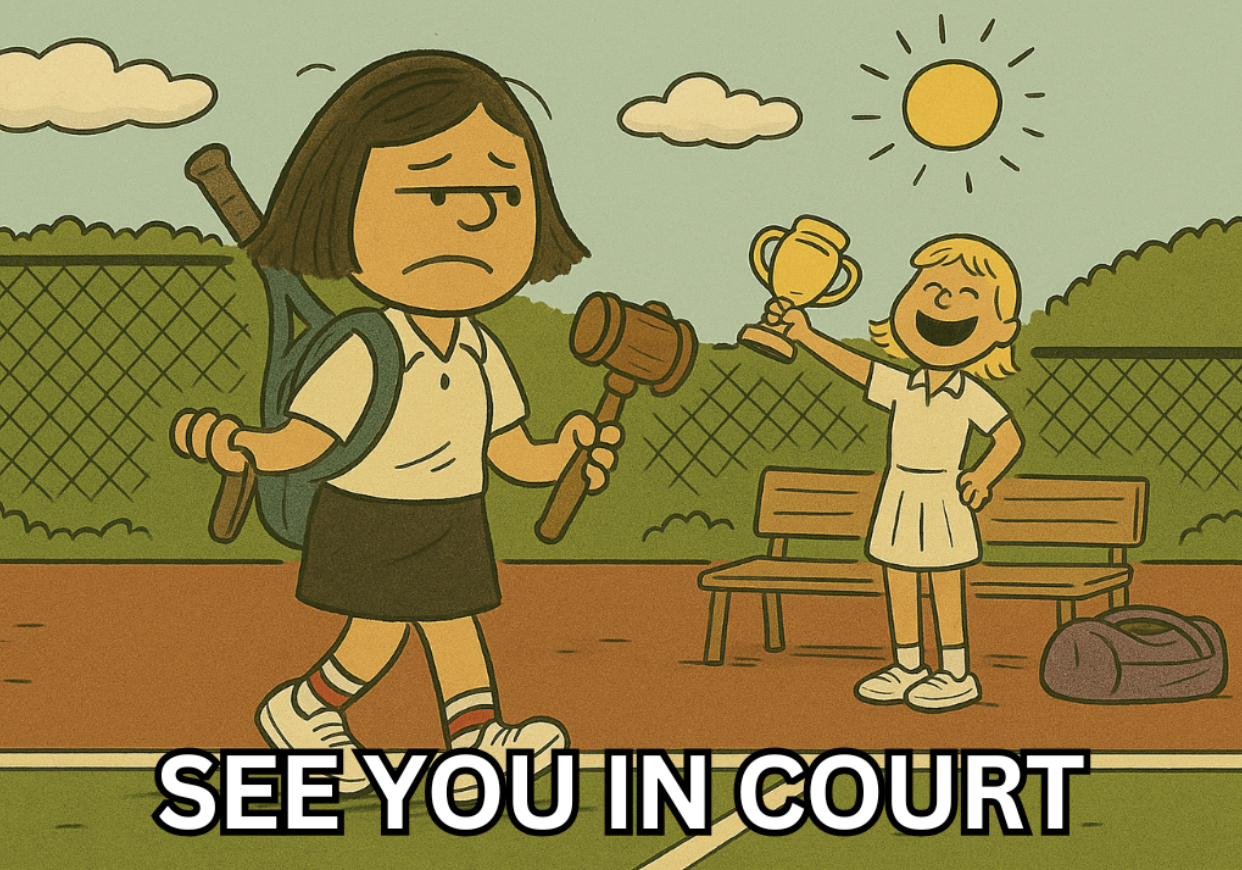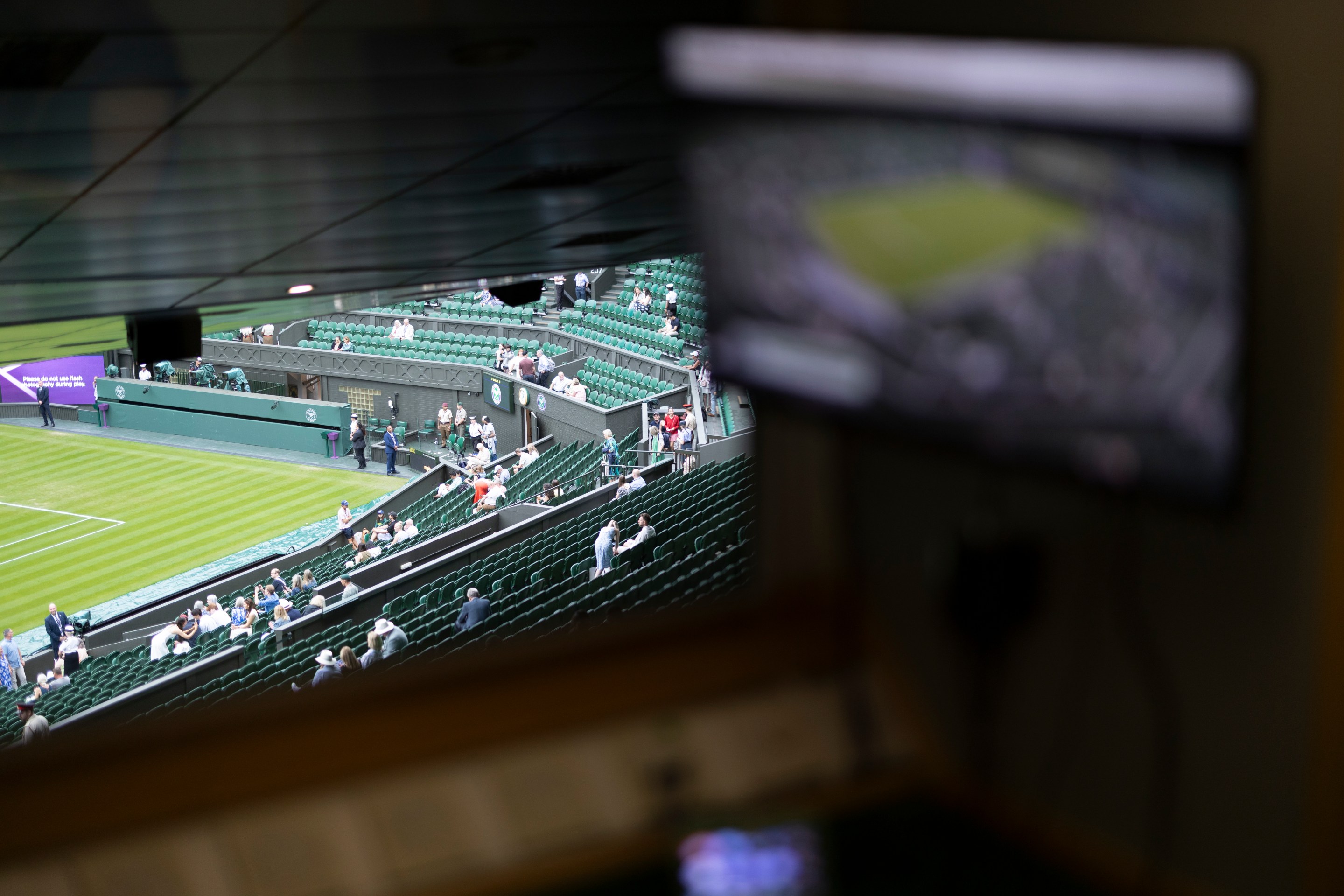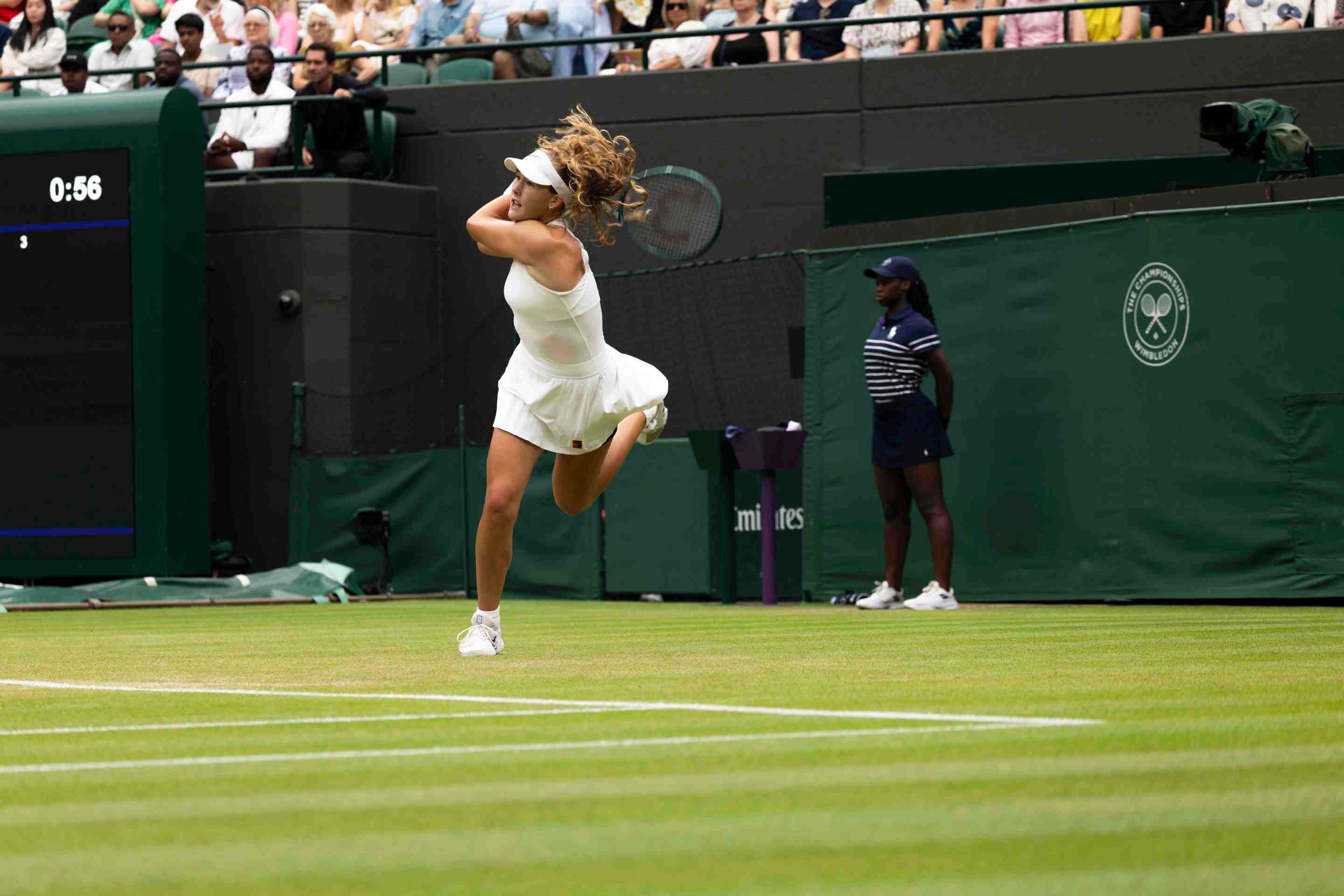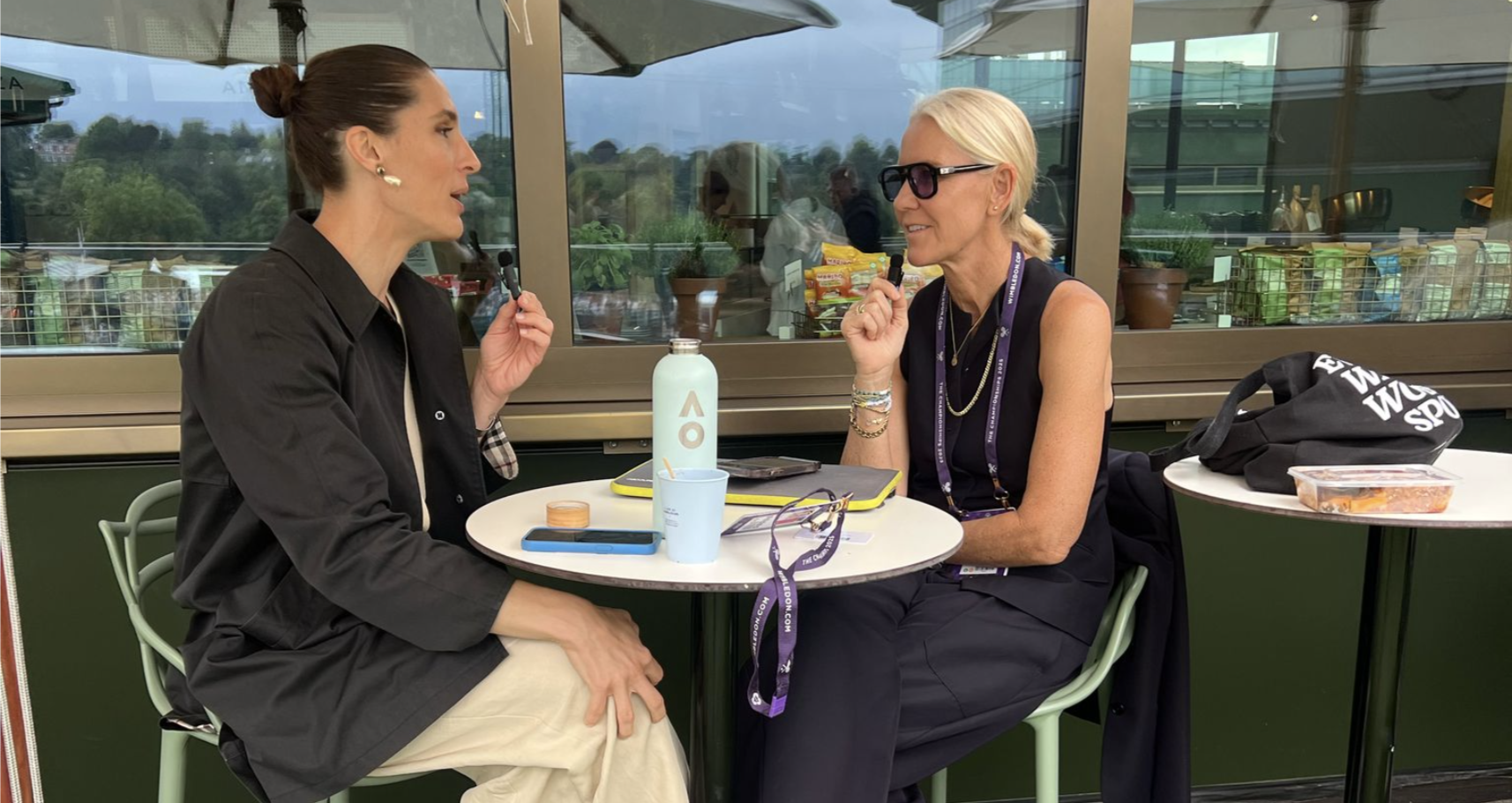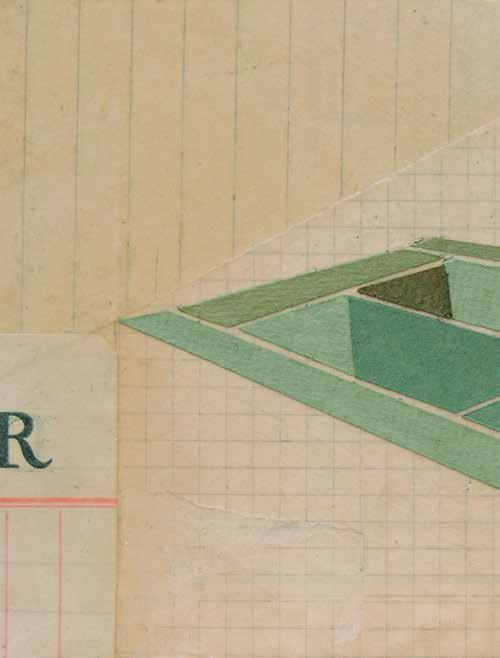
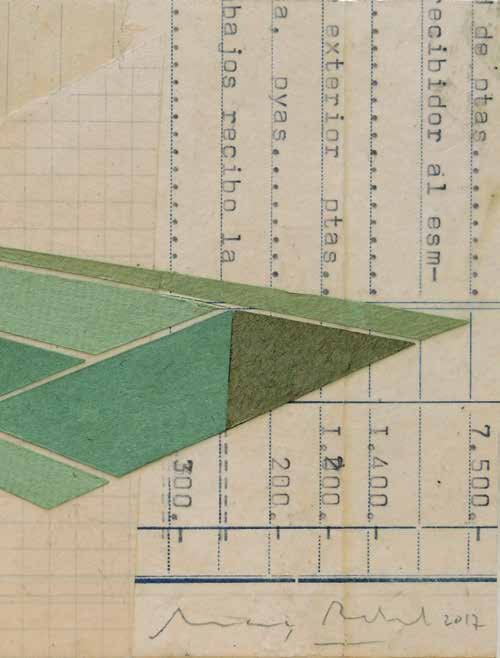

Lately I’ve been gravitating toward collage, and I’ve been applying this technique to different formats and media: paintings, stop-motion video, and artist’s books. I usually use recycled paper from old books and notebooks because I’m interested in the shades and graphic textures found within them.

Tennis was my favorite sport from 7 to 13 years old. I spent many hours on the tennis court. When my coach saw that I had some natural abilities, she suggested that I start training more seriously so that I could compete.
However, around the same time I also started taking painting classes, and due to constraints on my time and the expenses associated with both, I had to decide between tennis and painting. I decided to quit training. I loved tennis, but the competitive nature of the sport put me off it. I chose instead to start training in the sport of art.
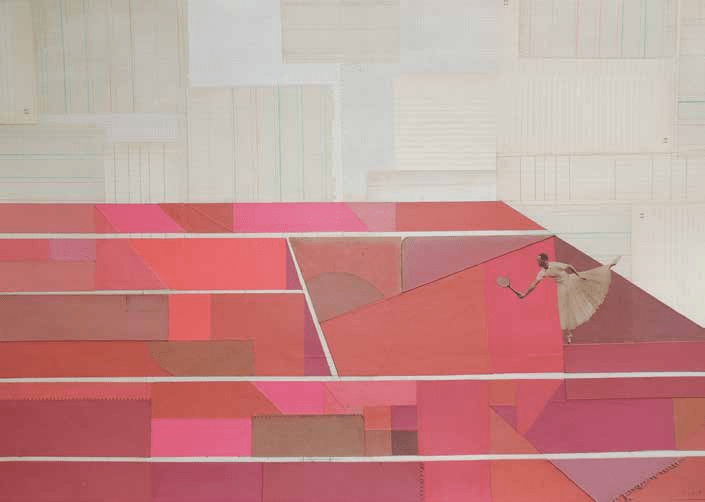
These new works that are focused ontennis are essentially a reunion with that stage of my life.
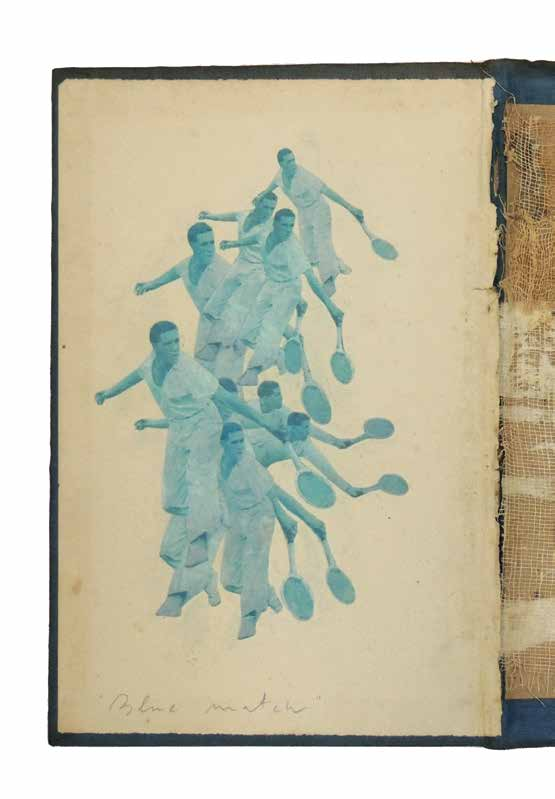
I’m revisiting the landscape of my past: play, innocence, and the joy of childhood.
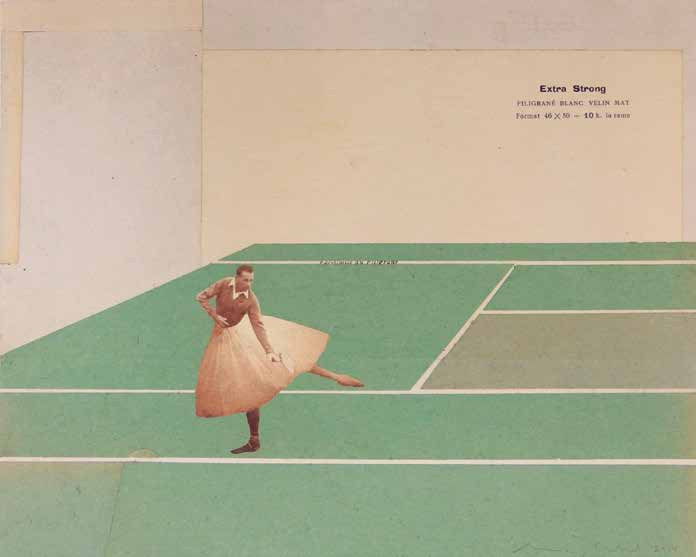
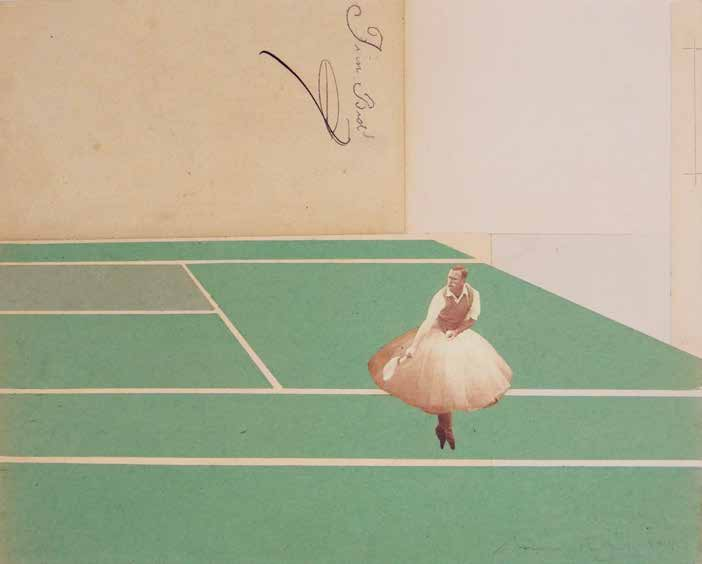
e frontons, which are used in the Basque sport of pelota (similar to jai alai), are also a reminiscence. Part of the summers of my childhood I spent at my grandparents’ house in Euskadi in the Basque Country, where pelota is not only the national sport, but the fronton is also a place where people eat and celebrate at parties. It is a vital space. I played pelota for many hours on the fronton at the family house, but between those two green walls I also learned to walk, to ride a bicycle, and to listen to the endless table talk of the adults when they celebrated something, oen seated at a long table installed in the middle of the fronton.
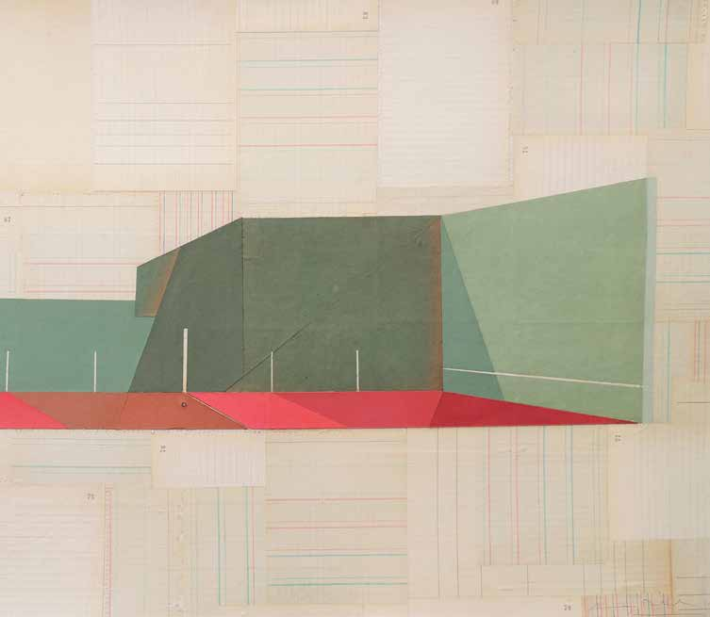
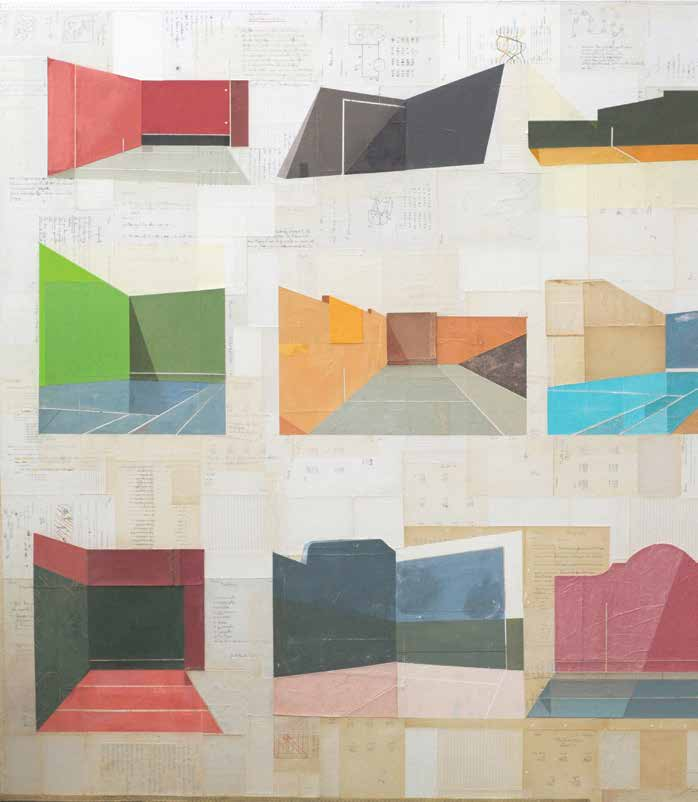
On the other hand, I also draw the fronton as an almost abstract space—a minimalist architectural construction that, to me, possesses a suggestive abstract beauty.
Featured in Racquet Issue No. 3
